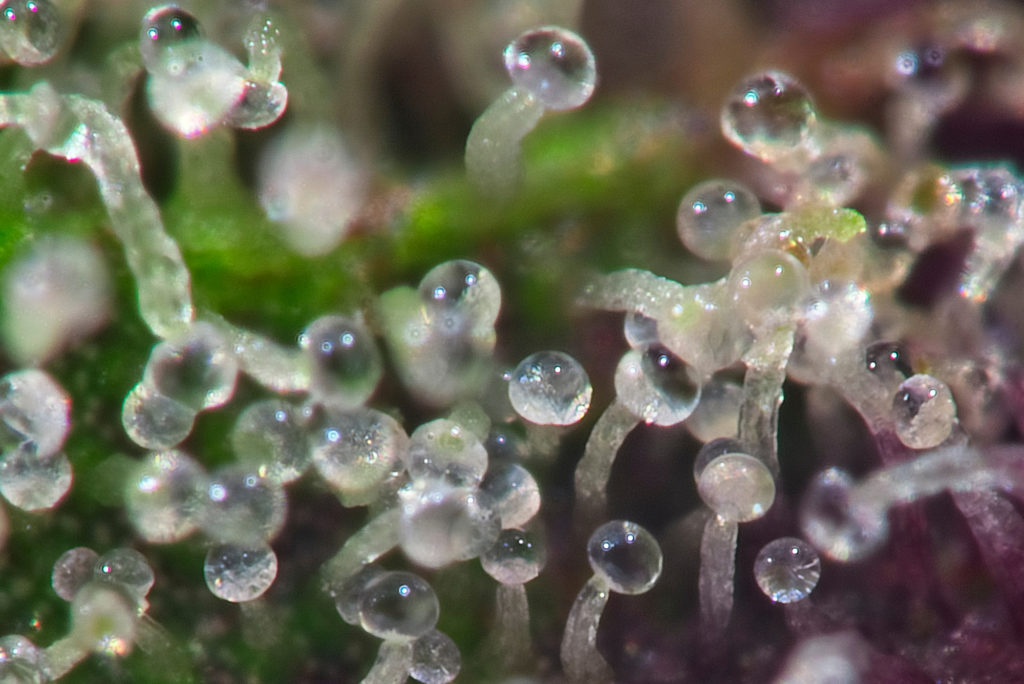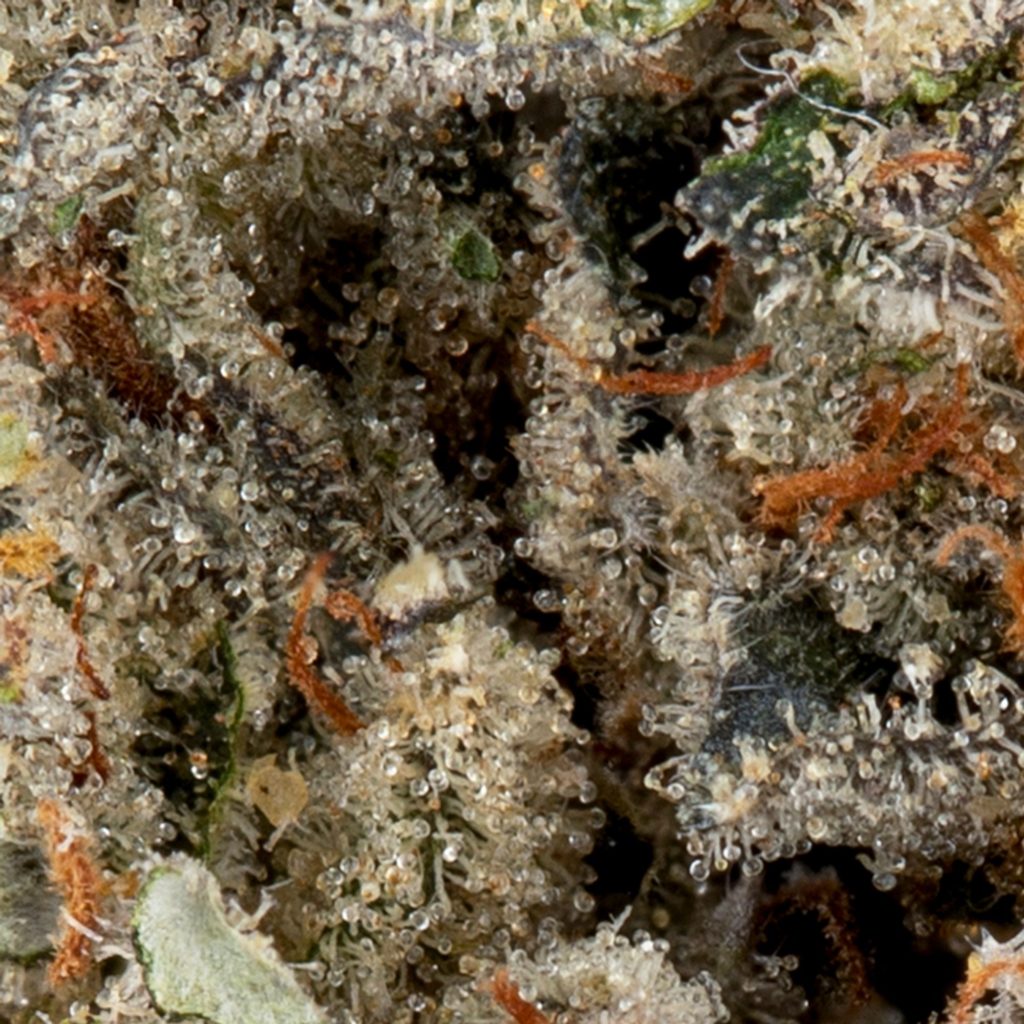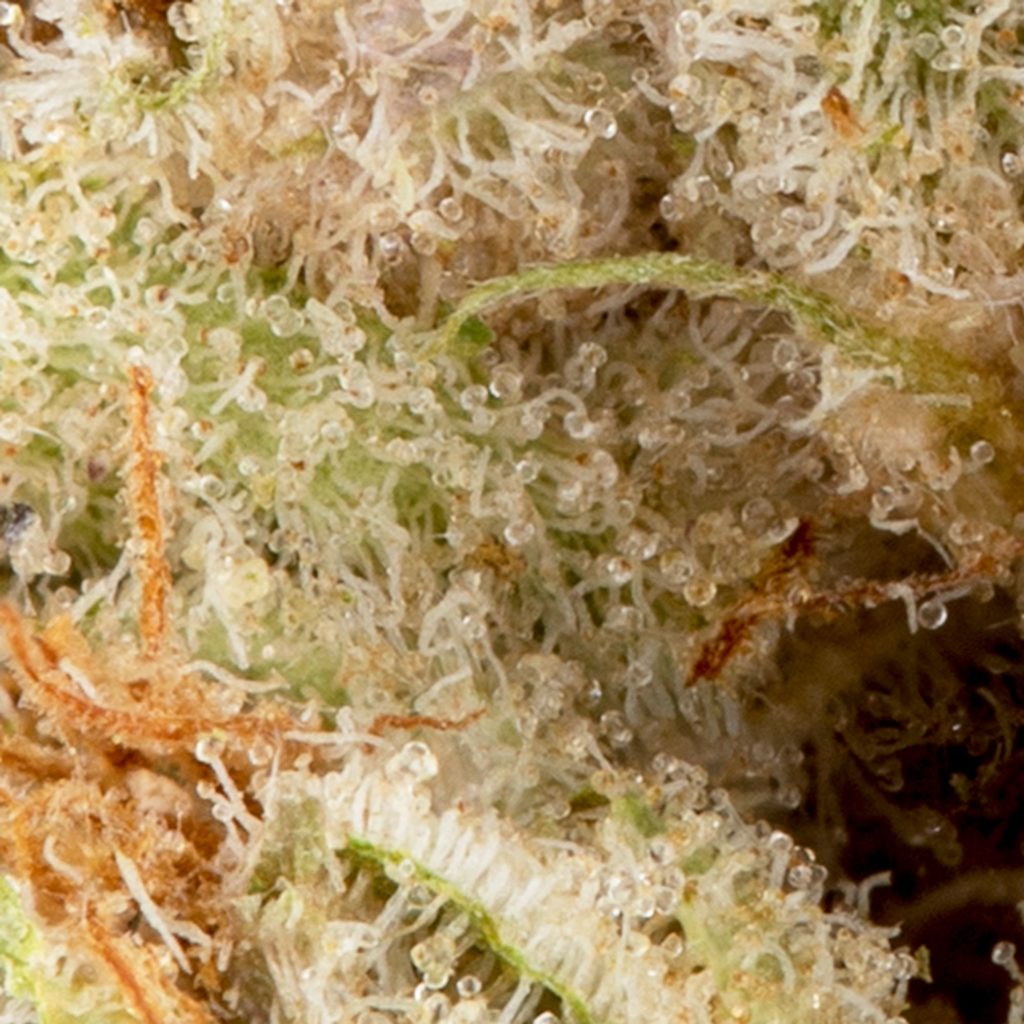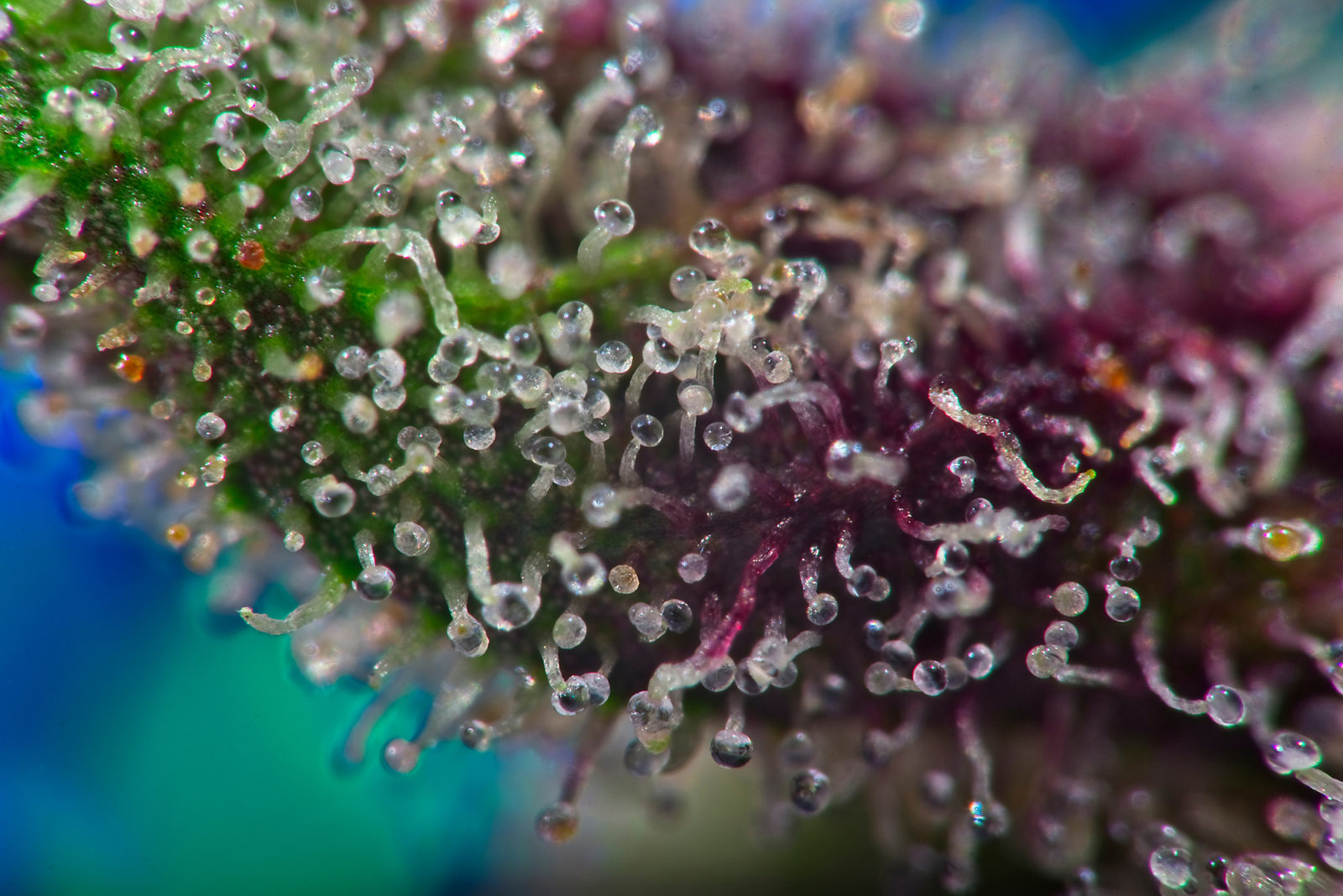Cannabis trichomes are the crystal-like formation found on the surface of cannabis flowers and leaves. They grow outwards from tiny, hairlike stalked glands located on all parts of the cannabis plant.
Trichome formation helps protect the plant (and its cannabinoid-rich resin) against predators. However, they also act as a defense mechanism against excessive light exposure.
In this blog post, we’ll inform you about three main things:
- What trichomes are,
- Their basic anatomy,
- How the process of trichome formation works
What Are Cannabis Trichomes?
Cannabis trichomes are the resinous crystals that grow on the surface of the flowers of cannabis plants. These resins, or trichomes, are the source of most cannabinoids and terpenes that comprise cannabis extracts and concentrates such as kief and hash. The trichomes are where cannabinoids and terpenes are produced (THC and CBD compounds), making cannabis medicine unique, diverse, and effective.

The Anatomy of the Trichome
These trichomes are where these active cannabinoids and terpenes are isolated from by cannabis extractors. Trichomes are produced at a molecular level by a series of growth phases that occur over time, known as the stage of trichome development.
From the beginning to the end of trichome development, there are three primary stages:
Stage 1 – Initiation
This is when the bud first begins to grow. Trichomes appear on the outer layers of buds in small bundles and look almost like fuzz balls or felt, but they become more pronounced as they continue to grow and develop.
Stage 2 – Early Development
This is where the trichomes form and differentiate themselves as their own genus, forming and developing independently from the buds around it. Trichomes start to grow and develop in tight clusters to produce tiny white, blue, or green crystals referred to as “hairs”. They also develop into smaller buds that fall off at the ends of their branches, which are the remnants of their original flowers.
Stage 3 – Maturation
All of the buds will have fallen off at this point, leaving a small amount of trichomes, but mostly trichomes that have been completely matured into sticky, white crystals. Trichomes will still be sticky and translucent even after this stage.

Different Types of Cannabis Trichomes
Trichomes come in all colors of these three primary colors described earlier: white, blue, green, and some other colors. White trichomes are the least potent and most common, followed by blue and green. As for potency increases, so does the rarity of coloured trichomes, with green being the rarest.
White trichomes are the least potent and most common, followed by blue and green. As for potency increases, so does the rarity of colored trichomes, with green being the rarest.
White trichomes in cannabis also have other names: crystalline hairs, wax crystals, resin glands, bud hairs or clear crystals.
White trichome-like crystals can be found on several different parts of cannabis, often mistaken for coarser haze or honey. These are located on the leaves and stems and are often referred to as glisten or sugar plants. When the trichomes form and develop on these plant parts, they can take on a clear appearance, making them look identical to white or blue trichomes.
The most potent white trichomes, which come in large clusters of small crystals, are grown and produced in the flowering tops of female cannabis plants. The smallest of these white crystals are found on the seeds, and after harvest, the seed trichomes will harden into tiny black dots.
Blue trichomes are the next most common type of cannabis trichomes produced in abundance by a female cannabis plant. These blue crystals grow slower than green or white crystals, but they become more abundant before they fall off. They can also take on different shades from a light blue to navy blue.
The most potent blue trichomes, which start as clusters of small crystals, grow and produce cannabinoids faster than white or green crystal trichomes. They’re produced by the tops of flowering female cannabis plants and thrive in abundance during the beginning of a plant’s growth cycle. These blue crystals may be smaller and more abundant than green and white crystal trichomes.
Green trichomes are the rarest type of cannabis trichomes produced in abundance by a female cannabis plant. They start as very small, translucent crystals that fall off the buds at the ends of the branch to form tiny black dots, which then grow into bigger clusters of larger crystal trichomes. These cluster crystals can range from an almost clear appearance through a green or blue color to a light yellow color.
The most potent green crystal trichomes grow faster than white or blue crystal trichomes and are usually produced in smaller clusters. They are formed and grown on the tops of flowering female cannabis plants, but they start off as tiny crystals that fall off the buds to form tiny black dots which then grow into larger clusters of larger crystal trichomes.
Green crystals are formed mainly at the beginning of a plant’s development and grow in abundance until they fall off. They might not be seen at the beginning of a plant’s development or even in the flowering phase, but they can quickly grow and begin to release cannabinoids once they fall off.
Trichomes set cannabis apart from other kinds of plants that produce resins and other plant products. They also make us believe that cannabis is not just any “weed”; it’s medicine.
In the end, it’s the trichomes that make a cannabis plant what it is. They’re what give us unique cannabis strains and make them so valuable on the market. Because of these resinous glands, we have different indica, sativa and hybrid strains with different effects and different terpene profiles, which can lead to tremendous healing benefits.
Trichomes make a big difference in the overall effect of your high or your desired medicinal effect. They are essential structures to look at and study when you want to understand the resinous aspect of cannabis as a whole.
Trichomes = resins = cannabinoids.
Here’s a quick overview of what they can do for you.

Benefits of Cannabis Trichomes
Cannabis trichomes are where all the healing properties come from in terms of cannabinoids. In other words, they are the primary source of all cannabinoids and how you experience them depends on how much is being produced and how much is left.
Cannabinoids, when they’re released from their trichome casings, are what give your high potency. Each cannabinoid has its effect on your body, mind and spirit. There are over 100 cannabinoids in cannabis, and they can help you with several issues.
They’re what give us unique cannabis strains and make them so valuable on the market. Because of these resinous glands, we have different indica, sativa and hybrid strains with different effects and different terpene profiles, which can lead to tremendous healing benefits.
There are over 100 cannabinoids found in cannabis plants.
THC is one of the most well-known cannabinoids, and it’s what makes you feel the effects of cannabis. It’s an intoxicating cannabinoid that impacts the brain, making you feel euphoric and happy. THC is what gets you high and gives cannabis its psychoactive properties, also known as “highness” or “stoned-out-ness.”
THC (Tetrahydrocannabinol) causes heightened feelings of pleasure and euphoria and is a strong painkiller. It’s also responsible for one of the most substantial sedating effects, which people call ‘couch-lock.’ This is also why THC can be used to treat nausea and significant cramping.
THC is a psychoactive cannabinoid found in both cannabis and hemp plants.
Many other cannabinoids are found in cannabis plants, and they each contribute to the experience you have while under the influence of cannabis. These include psychoactive cannabinoids and non-psychoactive cannabinoids.
Cannabis’ non-psychoactive cannabinoids can be as crucial as psychoactive cannabinoids, especially for medical purposes. This is because these non-psychoactive cannabinoids, including CBD and CBG, can be anti-inflammatory, anti-anxiety and pain relieving. Another cannabinoid is known as flavonoids, which are non-psychoactive and can be anti-inflammatory and anti-bacterial.
Conclusion
Trichomes have a lot to offer, and understanding them is crucial if you want to learn about the healing potential of cannabis. They are responsible for making your cannabis strain one of a kind, so it’s so important to study them in their formation and effects.


